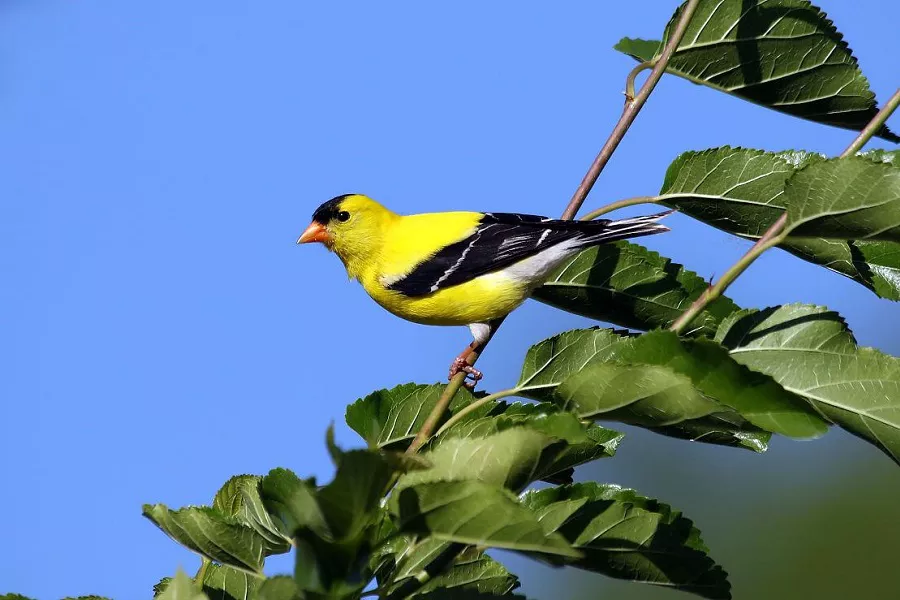The American Goldfinch is a small, brightly colored bird that is familiar to many people in North America. This striking bird is known for its cheerful song and distinctive yellow plumage, which has earned it the nickname “Wild Canary”. But despite being a common sight in gardens and parks across the United States and Canada, many people are unaware of the fascinating migration patterns of this species.
In this article, we will explore the migration habits of American Goldfinches, including where they go, when they migrate, and why they undertake these journeys. We will also examine some of the factors that can influence goldfinch migration, as well as how climate change may be affecting this process.
Where Do American Goldfinches Migrate?
American Goldfinches are migratory birds, which means that they travel from one area to another depending on the time of year. During the breeding season, goldfinches are found throughout most of North America, from southern Canada all the way down to Mexico. However, as winter approaches, many of these birds begin to move southward, seeking warmer temperatures and more abundant food sources.
Unlike some migratory birds, American Goldfinches do not fly very far during their seasonal migrations. Most goldfinches only travel between 500 and 1,000 miles, with some individuals moving even shorter distances. The exact route and destination of each bird vary depending on a variety of factors, such as the availability of food and the presence of suitable habitat.
When Do American Goldfinches Migrate?
The timing of American Goldfinch migration varies depending on the region and the individual bird. In general, goldfinches begin their fall migration in August or early September, with most birds leaving their breeding grounds by October. Some stragglers may remain behind until November, but by this point, the majority of the population has already begun its journey south.
During the winter months, American Goldfinches remain in their southern range, which includes much of the eastern and southern United States, as well as parts of Mexico and the Caribbean. By late February or early March, the birds begin to head north again, with many returning to their breeding grounds by April or May. Some goldfinches may travel shorter distances during this spring migration, as they move from one part of their range to another in search of suitable nesting sites and food sources.
Why Do American Goldfinches Migrate?
There are several reasons why American Goldfinches undertake seasonal migrations. One of the most important factors is food availability. During the breeding season, goldfinches feed primarily on seeds from plants such as thistles, sunflowers, and coneflowers. However, these food sources become scarce during the fall and winter months as many plants die back or lose their seeds.
By migrating southward, American Goldfinches can find new sources of food and avoid competition with other birds for limited resources. Additionally, the warmer temperatures and longer days in southern regions allow goldfinches to conserve energy and maintain their health during the winter months.
Factors That Influence Goldfinch Migration
While food availability is a major driver of goldfinch migration, there are other factors that can influence when and where the birds travel. For example, weather patterns can have a significant impact on migration timing. In years with mild winters and abundant food sources, some goldfinches may choose to remain in their northern breeding range rather than migrating south.
Similarly, habitat availability can also play a role in migration patterns. American Goldfinches require areas with open fields, meadows, and other types of grassy habitats to breed successfully. If these habitats become fragmented or destroyed, it could affect the ability of goldfinches to find suitable nesting sites and food sources, potentially altering their migration patterns.
Climate Change and Goldfinch Migration
As with many other migratory species, climate change represents a significant threat to American Goldfinches. Rising temperatures and changing weather patterns could disrupt the timing of migration, making it more difficult for birds to find suitable food sources and breeding sites. Additionally, habitat loss caused by human development and other factors could further impact goldfinch populations and their ability to migrate successfully.
However, there is also some evidence to suggest that American Goldfinches may be adapting to these challenges. In recent years, scientists have observed changes in the timing and duration of goldfinch migration, which could indicate that the birds are adjusting their behavior in response to environmental pressures.
Conclusion
In conclusion, American Goldfinches are fascinating migratory birds that undertake seasonal journeys across North America. These journeys are driven by a variety of factors, including food availability, weather patterns, and habitat availability. While climate change represents a significant threat to goldfinch populations, there is some evidence to suggest that the birds may be adapting to these challenges. By studying the migration patterns of American Goldfinches and other migratory species, we can contribute to their conservation by preserving suitable habitats and ensuring the availability of essential food resources throughout their annual cycles.


 Facebook
Facebook  Instagram
Instagram  Youtube
Youtube 